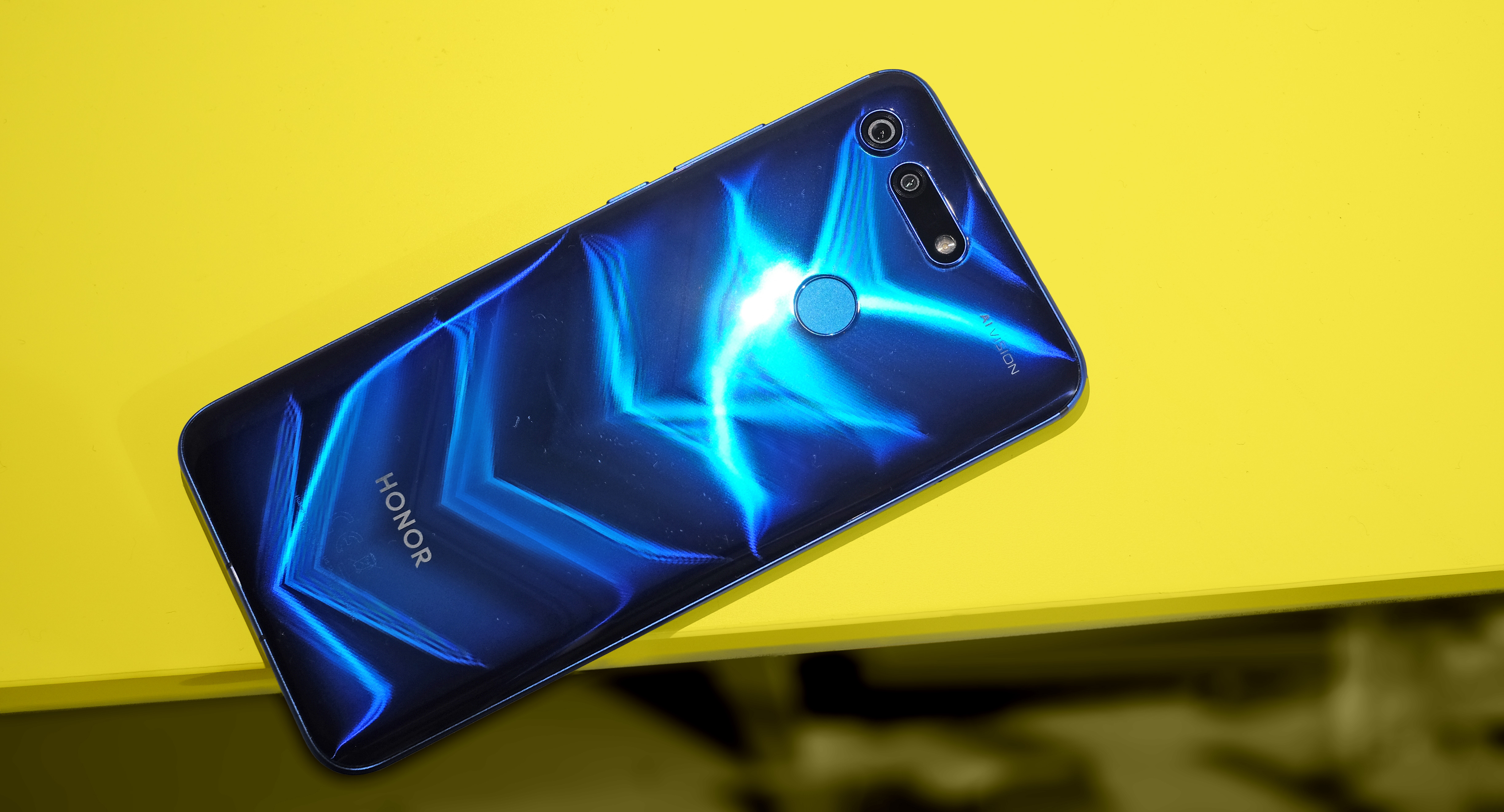Why you can trust TechRadar
Software
- Android 9.0 with Magic UI 2.0
- More pre-installed apps than we'd like
The Honor View 20 runs Android 9.0 with Magic UI 2.0 resting on top. This is Honor's own version of the EMUI software used in Huawei phones. The two are very similar.
There's no app drawer as standard but you can bring it back in the Settings menu. The icon style is less clean than Android's default, but you can change this with themes.
Honor also injects less of its own content into your home screens than some custom UIs. Head to the left of your main home screen and you'll see Google's streaming feed, not one Honor or Huawei has designed. You can turn this page off too.
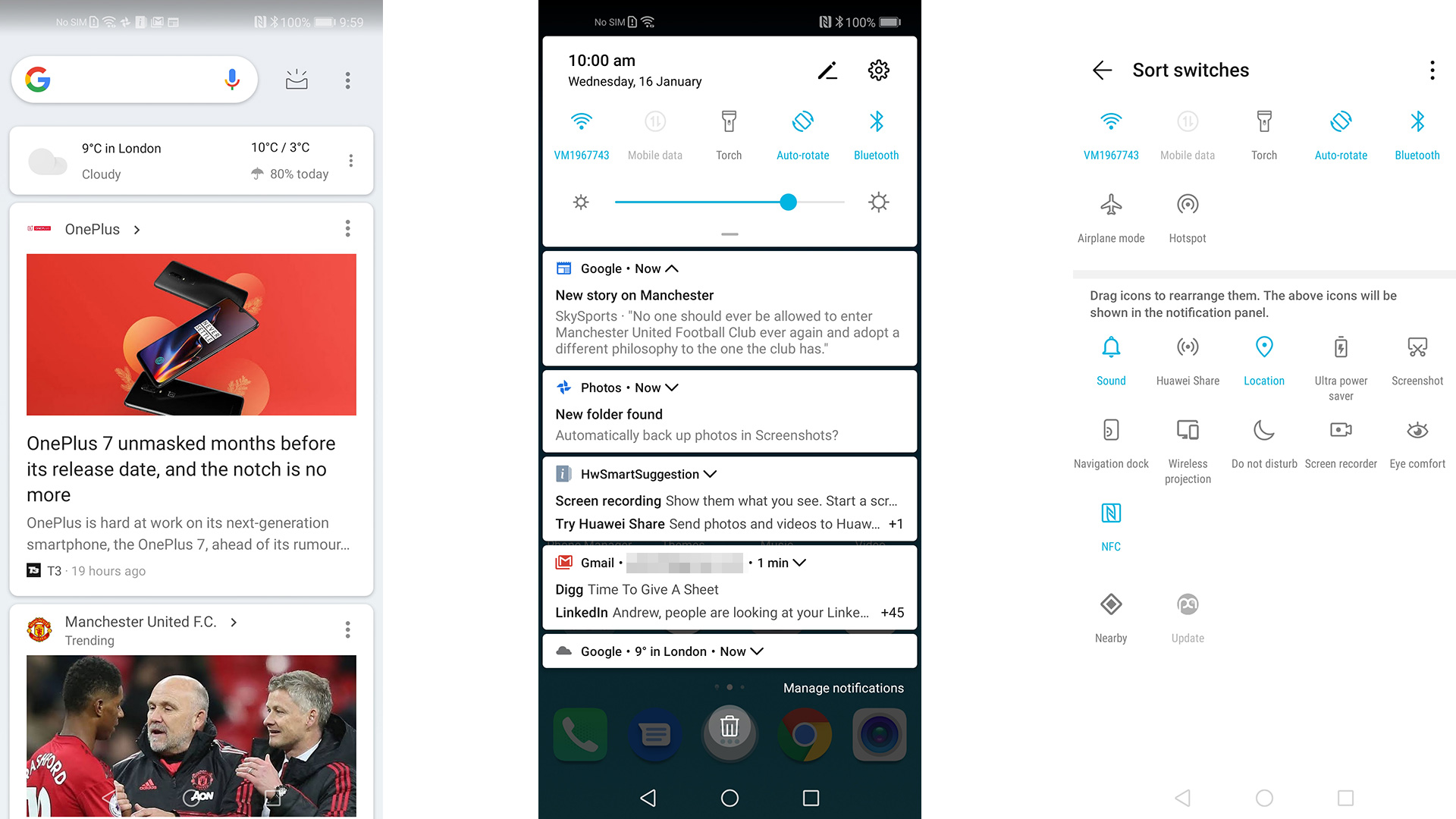
The same reserve isn't quite seen in the Honor View 20's pre-installed apps. There's some typical Honor bloat here. Huawei AppGallery is the Google Play alternative no-one wanted or needs.
The Honor Store is effectively just a link to part of the Honor website. And, strangest of the lot, Party mode lets you and friends create the worst party sound system ever devised by all syncing up a song on your phones' speakers. The tech is genuinely quite neat, the reality probably less so.
Other Honor View 20 pre-installed apps are much less contentious. There's a voice recorder, backup tool, weather app and Huawei Pay. This is an alternative to Google Pay. Huawei Health does the same for Google Fit. It’s a fitness tracker. But as this app has been developed over years with both phones and fitness trackers in mind, it's actually pretty good.
As you’d hope of a phone with a high-end chipset, the View 20 runs very well. It’s smooth. It’s responsive. Apps load fairly quick.
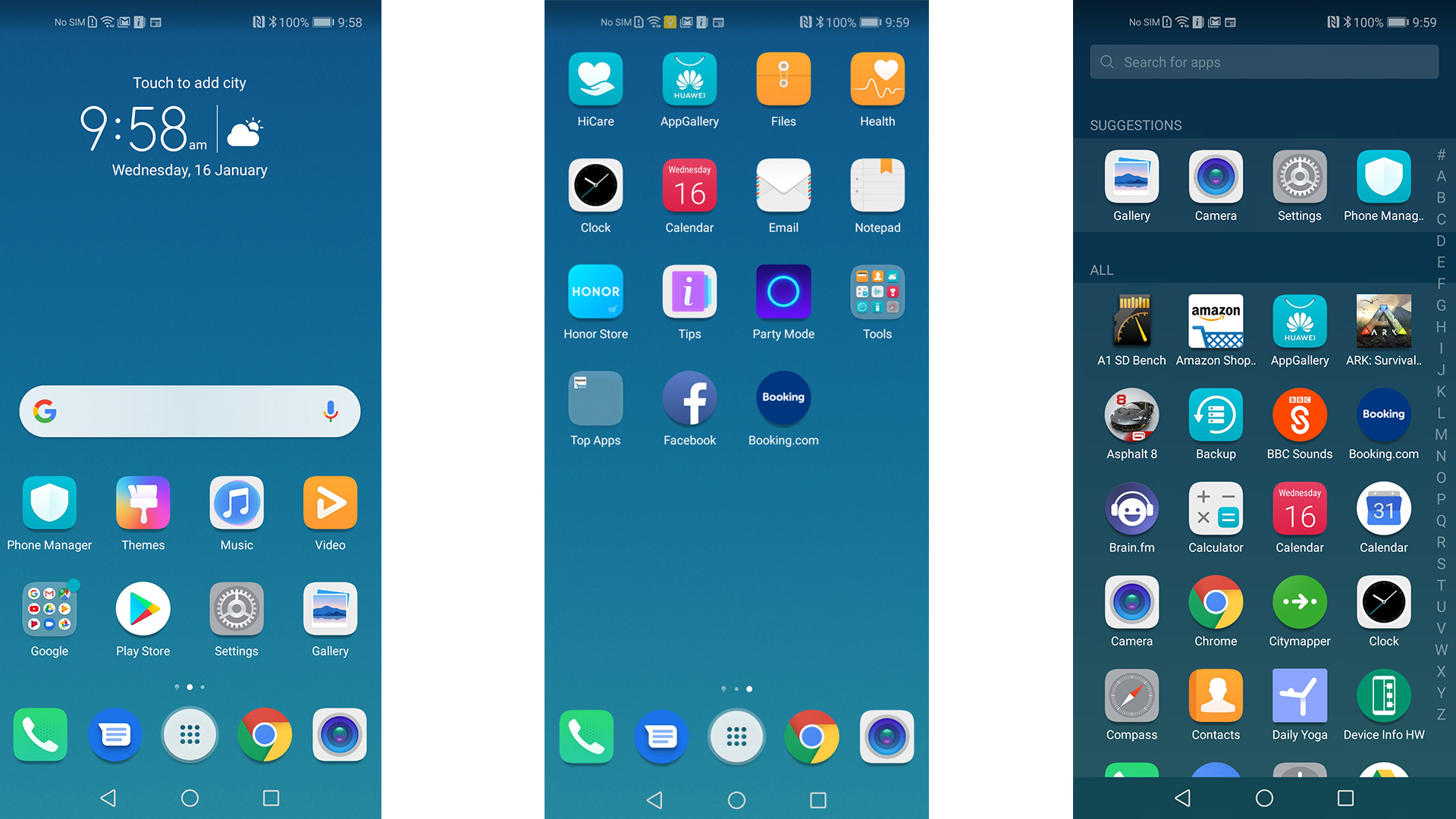
Movies and games
- Fairly rich-sounding mono speaker
- Punch hole: good for games
- Punch hole: less good for 21:9 movies
When you spend big money on a phone, it's worth considering why before you do so. Two of the best excuses outside of bragging rights and street cred are movies and gaming.
The Honor View 20 is a great fit for both. It has a powerful chipset, the screen is big and bold and 256GB of storage gives you a ridiculous amount of room for downloaded content.
This raises the punch hole screen again. How does media deal with it? If you play 16:9 movies with cropping, the punch hole doesn't even enter the equation. Black bars sit to the left and right of the content, so the whole screen isn't used.
Watch a cinematic 2.39:1 movie or trailer, though, and you can use the whole Honor View 20 screen. YouTube is already prepped to do so. It's not the best experience, though.
The punch hole gap isn’t distracting during darker scenes, but it stands out hugely in bright ones. Perhaps after a while you'll be able to trick your mind into ignoring it, like a particularly bold watermark. But we might not get to that point.
The same issues don't really apply to gaming. Casual portrait games won't generally benefit from the extra centimeter of space afford by using the whole screen. And console-style landscape orientation games often make you rest a thumb over the punch hole area anyway.
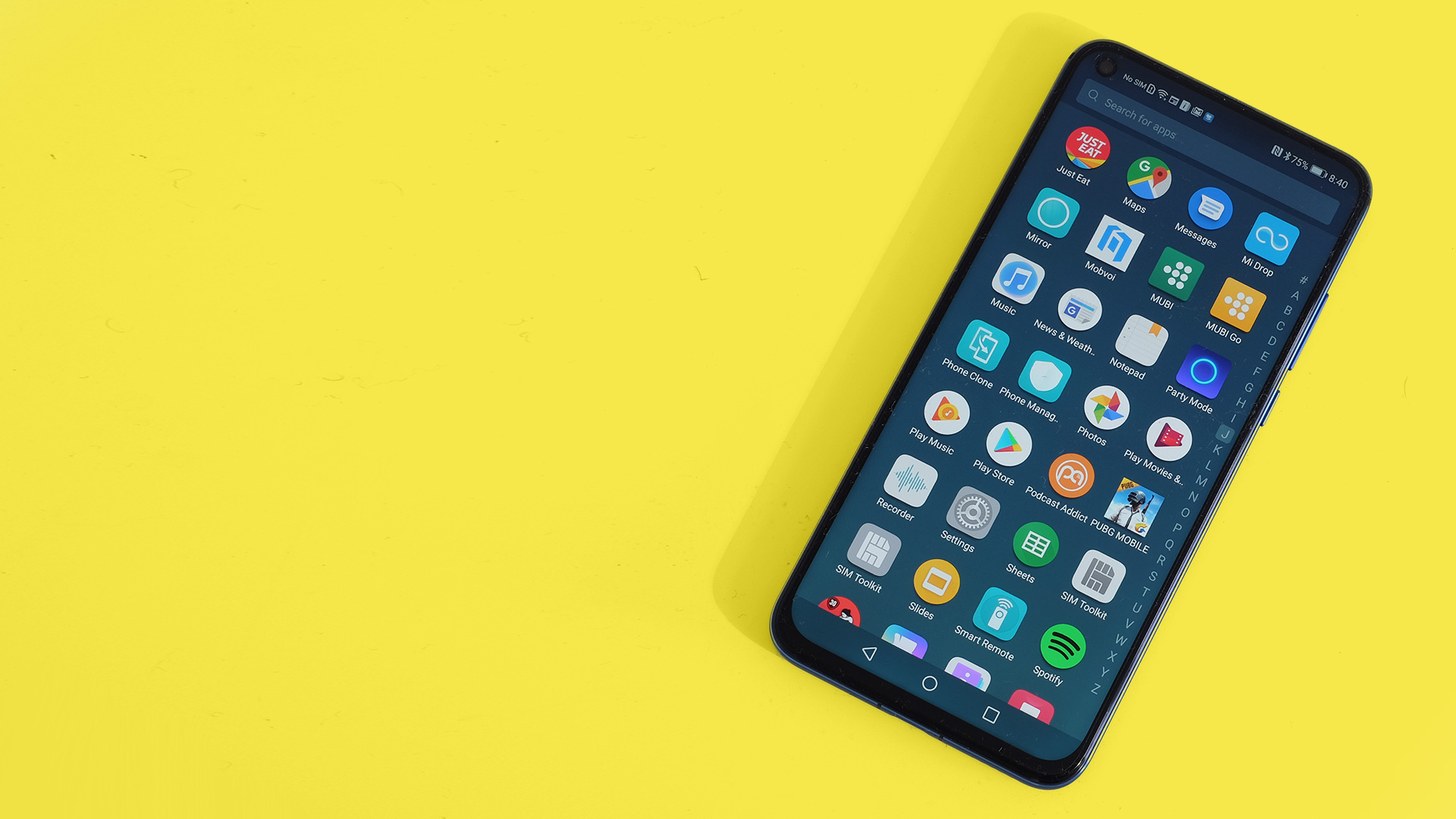
It's hard to see how another manufacturer can make a punch hole design work better than this.
When playing a game, the one actual annoyance is something else. We're glad the View 20 has a headphone jack, but it would be much more conveniently placed over on the other side of the phone's top edge.
It gets in the way when the phone is held on its side, again, for movies and games. You can turn the phone around, of course, but then the punch hole is in a slightly more distracting position.
Top-end games run very well on the Honor View 20. But not quite as well as on a phone with a Snapdragon 845 chipset, like the Google Pixel 3 XL. Qualcomm's top chipsets simply have more powerful GPUs than the Kirin used here.
In 3DMark’s Slingshot Extreme the View 20 scores 3,681 points (OpenGL 3.1). The Pixel 3 XL scores around 4,400 points.
However, you'll only notice the difference in a small handful of games, such as Ark: Survival Evolved. Or when emulating more recent consoles with, for example, the Dolphin app.

Honor has tried to deal with this slight GPU shortfall with GPU Turbo 2.0. This is a per-game optimization technique that streamlines processor load, for genuine performance benefits.
However, it requires a profile to be developed specifically for each title. Games currently on the list include King of Glory, Crossfire, Knives Out and PUBG. That last one is probably the most important.
But what are the real-world benefits of GPU Turbo 2.0?
It’s hard to quantify as we have no direct comparison available, no phone with the same CPU but no GPU Turbo. However, we can say PUBG runs very well. It lets you use the High graphics setting, and we see almost zero performance blips.
The Honor View 20’s speaker also enhances the gaming experience, even if it isn’t perfect. This phone has a nicely rounded sound, with thicker-than average bass and mids. It helps the sound seem smooth and pleasant even at maximum volume, which is respectably loud.
There’s just one driver, though. It sits on the bottom of the phone, so sound dispersal isn’t ideal when playing a landscape orientation game.
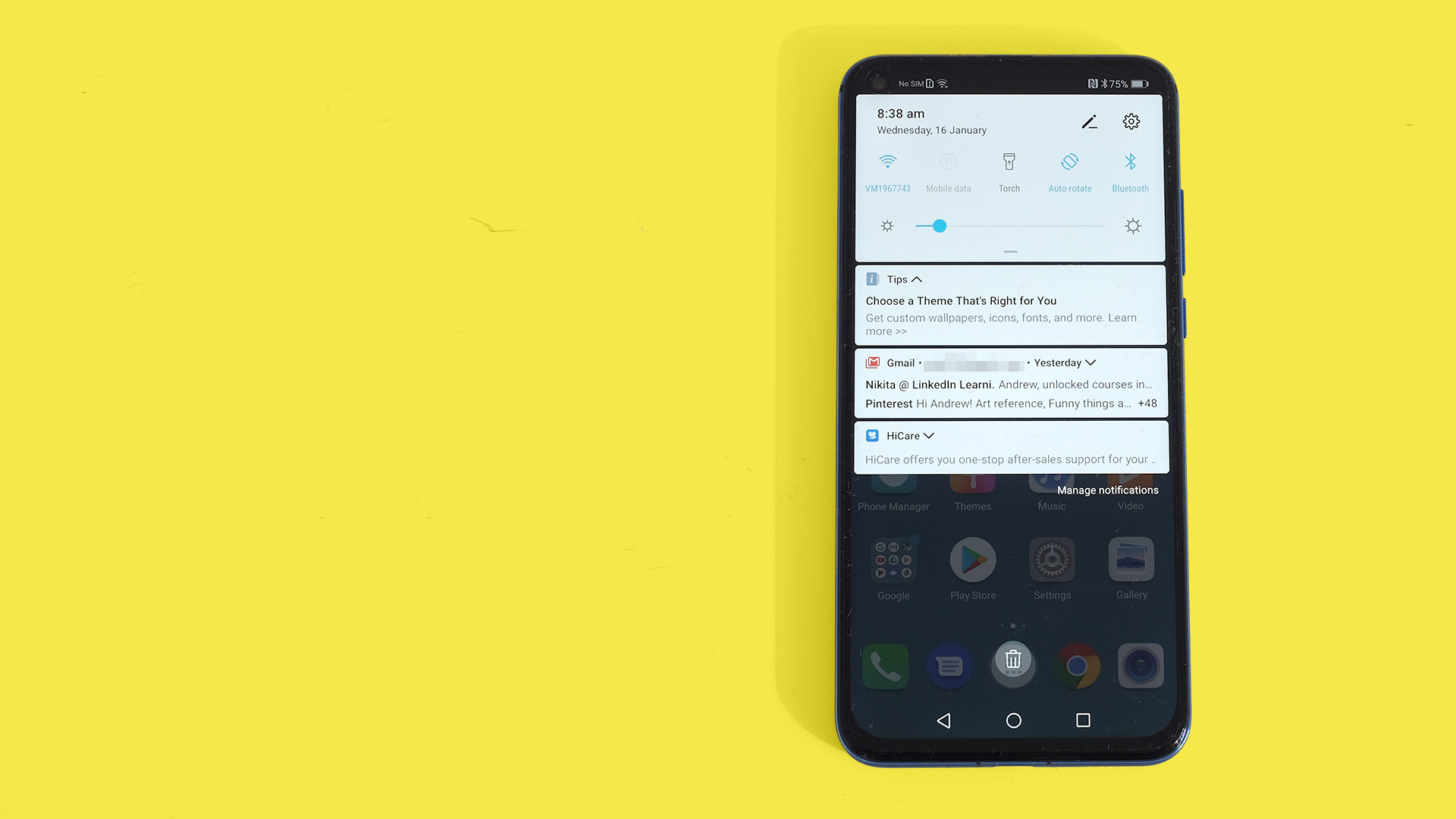
Performance
- 7nm Kirin 980 CPU
- 2 x 2.6GHz Cortex-A76, 2 x 1.92GHz Cortex-A76, 4 x 1.8GHz Cortex-A55
- Great CPU performance, GPU is not a Snapdragon 845-beater
The Honor View 20 has a HiSilicon Kirin 980 chipset. Huawei's Mate 20 Pro uses the same CPU.
It has eight cores but, unusually, splits them into three groups rather than the usual two. There are four Cortex-A55 cores clocked at 1.8GHz, two Cortex-A76 performance cores at 1.92GHz and another two A76s at 2.6GHz.
This effectively gives the Honor View 20 more gears, which should theoretically help with power consumption. The phone scores 9,709 points in Geekbench 4 (3,293 per core), which is around 10% more than a Snapdragon 845 phone like the OnePlus 6T.
It’s a powerful chipset, even if the GPU side isn’t class-leading. That GPU is a 10-core Mali-G76. It’s punchy, but can’t quite match the Adreno 630 used in some more expensive rivals and the OnePlus 6T. The Kirin 980 is also a 7nm chipset, the most up-to-date architecture style for phones in early 2019.
Current page: Anything else I should know?
Prev Page Battery life and camera Next Page Verdict and competitionAndrew is a freelance journalist and has been writing and editing for some of the UK's top tech and lifestyle publications including TrustedReviews, Stuff, T3, TechRadar, Lifehacker and others.
